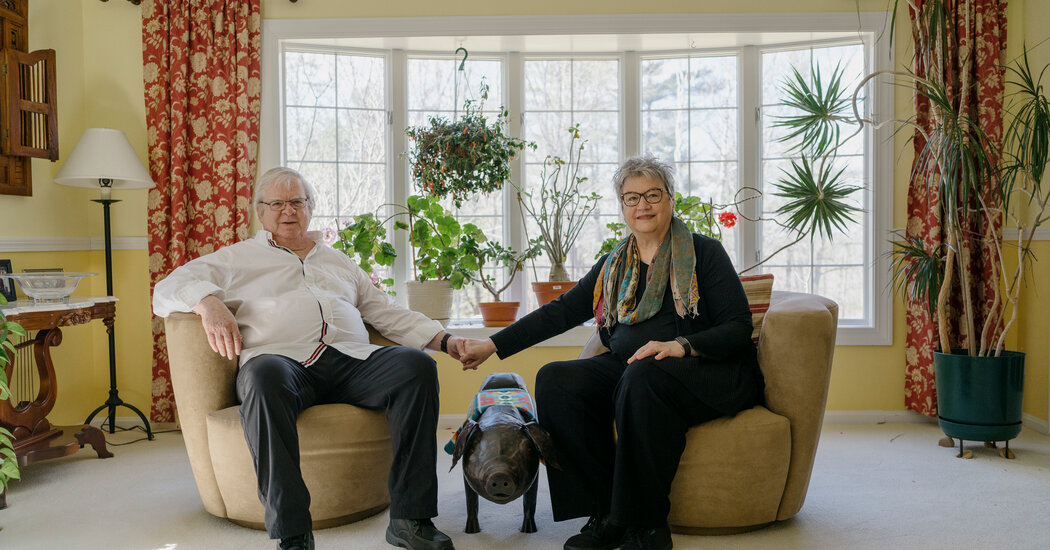
For about 15 years, Paula Span has dedicated much of her journalism career to covering one subject: aging, and the challenges that come with it.
Ms. Span writes The New Old Age, a twice-monthly column for the Health section at The New York Times about issues affecting older Americans. Among the topics she has recently explored are the costs of growing older, the rise of robotic pets as companions and the hazards of misinformation on social media.
Ms. Span took over the column in 2009, when it was just a blog. Before The Times, she wrote for The Washington Post’s Style desk and magazine, where in 2002, she reported an article about residents at an assisted-living facility in Bethesda, Md.
“At the time, people didn’t really know much about assisted living,” Ms. Span said. “It got me interested in spending time with older people and writing about these issues.” Four years later, she began writing her first book, “When the Time Comes,” about the struggles of families with aging parents.
In a phone interview from her home in Brooklyn, Ms. Span, 74, discussed how the column’s audience has changed over the years and why she reads every reader comment on her articles. These are edited excerpts from the conversation.
What makes for a good column of yours?
Something that’s a national trend or a development that’s rooted in fact, science and research and affects people. There is no shortage of such topics when you’re talking about a group as large as elder Americans. There’s something like 60 million people over 65 in the United States. It’s a very heterogeneous group. There are many things that this group is concerned about, like living arrangements; Medicare and other insurance and policy issues; health; end-of-life connections. It’s a big canvas, which makes it enjoyable and continually interesting. When I took the column on, I thought I’d run out of material in a few years. Of course, 15 years later, there’s still so much to talk about.
Where do you find ideas?
I have a press subscription to a lot of medical journals, so I’m constantly looking for what researchers are discovering about seniors and health and overdiagnosis and overtreatment. A number of advocacy groups interested in Medicare, housing, nutrition and other issues get in touch with me. Anyone who talks about aging within 20 feet of me, I am all over it. Readers also write to me in the comments section.
Who do you consider your audience for this column?
That has changed a bit over time. When The New Old Age was conceived initially as a column about aging and caregiving, we thought the audience was the adult children who were caring for and helping to make decisions about their parents and their elder relatives. Over time, we came to realize that many of our readers were older adults themselves. We were writing about them as if they weren’t there. It probably helped that I was aging along with the column, so I became an older adult.
So now we see our audience as family members and adult children, but also older Americans themselves and all the people that are interested in the topic, like gerontologists, Meals on Wheels staffers, operators of long-term care facilities, advocates and elder attorneys. A group this big attracts a lot of attention from many sources.
Your article on homeownership no longer being a boon for older Americans stood out to me. What inspired it?
I think it came from Boston College’s Center for Retirement Research, which had been looking at this topic. When I read more about it, it appeared that a lot of agencies and research groups had been looking at this subject because of first lower then rising interest rates, soaring rents and housing prices. Most of us grew up thinking that homeownership was your A.T.M. that funds and secures your retirement. For some people, that may no longer be the case. I think reporters have an interest in looking deeper into things that we all thought were true that maybe turn out not to be. This story was one of those.
I noticed you like to engage with readers who comment on your articles.
I try to gauge how people feel about an issue. Sometimes I do get ideas from what readers share about their own experiences. We talk a lot about the disadvantages of the way we all live online, but this is an advantage. Early in my career, if any reader wanted to get in touch with me, they had to either try to get my phone number and call me or write me a physical letter. To be able to see what people think and feel is really useful.
What’s the greatest challenge of your work?
Finding older individuals who are willing to share their stories with me about things that are sometimes quite personal — health care, family relationships, finances. I think it’s easier to delve into some of these complicated subjects when there is a human story to tell. People have been very generous with their time. But we do require that they use their real names, locations and ages. We like to take their photographs when we can, and sometimes that can be difficult.
Do you have a favorite column from your 15 years of coverage?
One example where I could actually see the impact of something that I wrote, and that other media outlets also covered, was when the Justice Department went after the operator of an upscale continuing care retirement community in Virginia for discrimination; it was barring people who lived in the assisted living and the nursing home sections of the facility, restricting the fancy waterfront dining room to the independent living residents. Residents were outraged. They were paying a lot of money for that place.